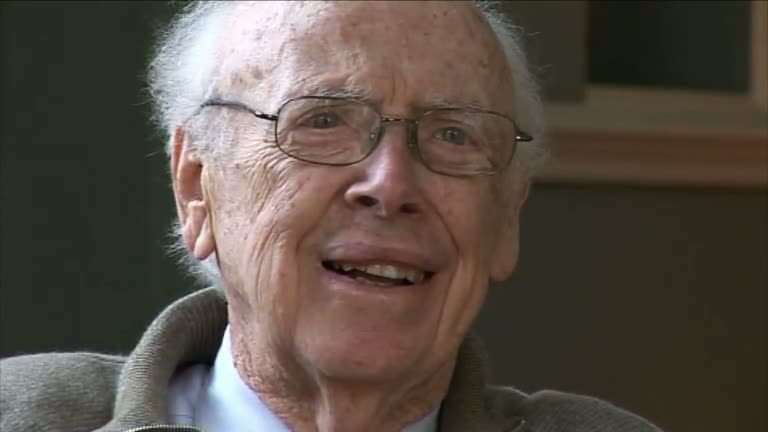This year, 2009, is the 50th anniversary of my giving a course at Harvard in the college, not the medical school, in Cambridge on the biology of cancer. And it had only five students, but the year before I'd become very excited because I had thought I had probably the likely answer to why some viruses were tumor viruses. The first tumor virus, the Rous sarcoma virus had been discovered I think in 1911. Peyton Rous got the Nobel Prize for the work about 50 years later. And I first heard about them in 1947 when I was in my first year in Indiana and took a course on viruses given by Salvador Luria who afterwards became my PhD supervisor. And so normally, viruses which can infect plants, animals, bacteria - Luria worked on bacteria which were much simpler systems. Let's say, poliomyelitis was a virus, the common cold was a virus - that certain viruses, they could be either DNA or RNA viruses, sometimes instead of multiplying within the cell converted the cell into a cancerous cell. And so that was a total mystery when Luria gave the course and that was before we knew the double helix or really anything. But when I went to Harvard as an assistant professor in 1956, I was required to teach a course. And I didn't think about giving a course on DNA because we knew the double helix and virtually nothing else. You know, Kornberg had just published evidence of - that he could incorporate nucleotides into DNA, but you could have given a course on the chemistry of DNA but I wasn't a chemist. And I thought most of the details were pretty boring. You know, that was just when, you know, Paul Doty's lab was working out denaturation. And you know, Paul would have been the first to talk about that, not me. So my course was largely biological. But the third year I gave it, during the previous summer, Seymour Cohen had told me that, at Woods Hole, that the DNA of the phages T2, T4, T6 which had an unusual base. It didn't have cytosine, it had 5-methylcytosine, that the enzymes required to make the cytosine or it was 5-hydroxymethylcytosine - I think, yes, there was a gene for it. So until then, I thought viruses just provided genetic information for their [unclear]. But suddenly, these viruses would carry genes which would be, you know, preparing the host cell to replicate the nucleic acid, sort of making the enzymes or turning on the cell cycle or moving it to a phase when the enzyme needed to replicate DNA came up. Of course, we didn't know the immense complexity then. And so when I was lecturing on tumor viruses, I can't say the moment but suddenly I thought the secret of tumor viruses lay in their carrying genes which turned on DNA synthesis, 'cause if you'd say a virus would want to multiply in the liver, the liver cells aren't multiplying so you would need to somehow turn on the system. And it just seems such a wonderful, simple idea. I found it difficult to explain the RNA viruses, but that was, you know, long before we knew that RNA could be converted to DNA and there was really nothing different about the genetic structure of RNA viruses and DNA. And - but that spring, when I was so excited by tumor viruses that the work in our lab was really going very fast and I went over to Mass General and went to John Littlefield's lab and he was - who had been working purely on protein synthesis. And he was purifying the Shope rabbit papillomavirus, so I just thought that would be an interesting system.
American molecular biologist James Dewey Watson was best known for discovering the structure of DNA for which he was jointly awarded the 1962 Nobel Prize in Physiology or Medicine along with Francis Crick and Maurice Wilkins. His long career saw him teaching at Harvard and Caltech, and taking over the directorship of Cold Spring Harbor Laboratory in New York. From 1988 to 1992, James Watson was head of the Human Genome Project at the National Institutes of Health.
Title: Novel ideas about tumor viruses
Listeners:
Martin Raff
Walter Gratzer
Martin Raff is a Canadian-born neurologist and research biologist who has made important contributions to immunology and cell development. He has a special interest in apoptosis, the phenomenon of cell death.
Listen to
Martin Raff at Web of Stories
Walter Gratzer is Emeritus Professor of Biophysical Chemistry at King's College London, and was for most of his research career a member of the scientific staff of the Medical Research Council. He is the author of several books on popular science. He was a Postdoctoral Fellow at Harvard and has known Jim Watson since that time
Duration:
6 minutes, 25 seconds
Date story recorded:
November 2008 and October 2009
Date story went live:
18 June 2010






